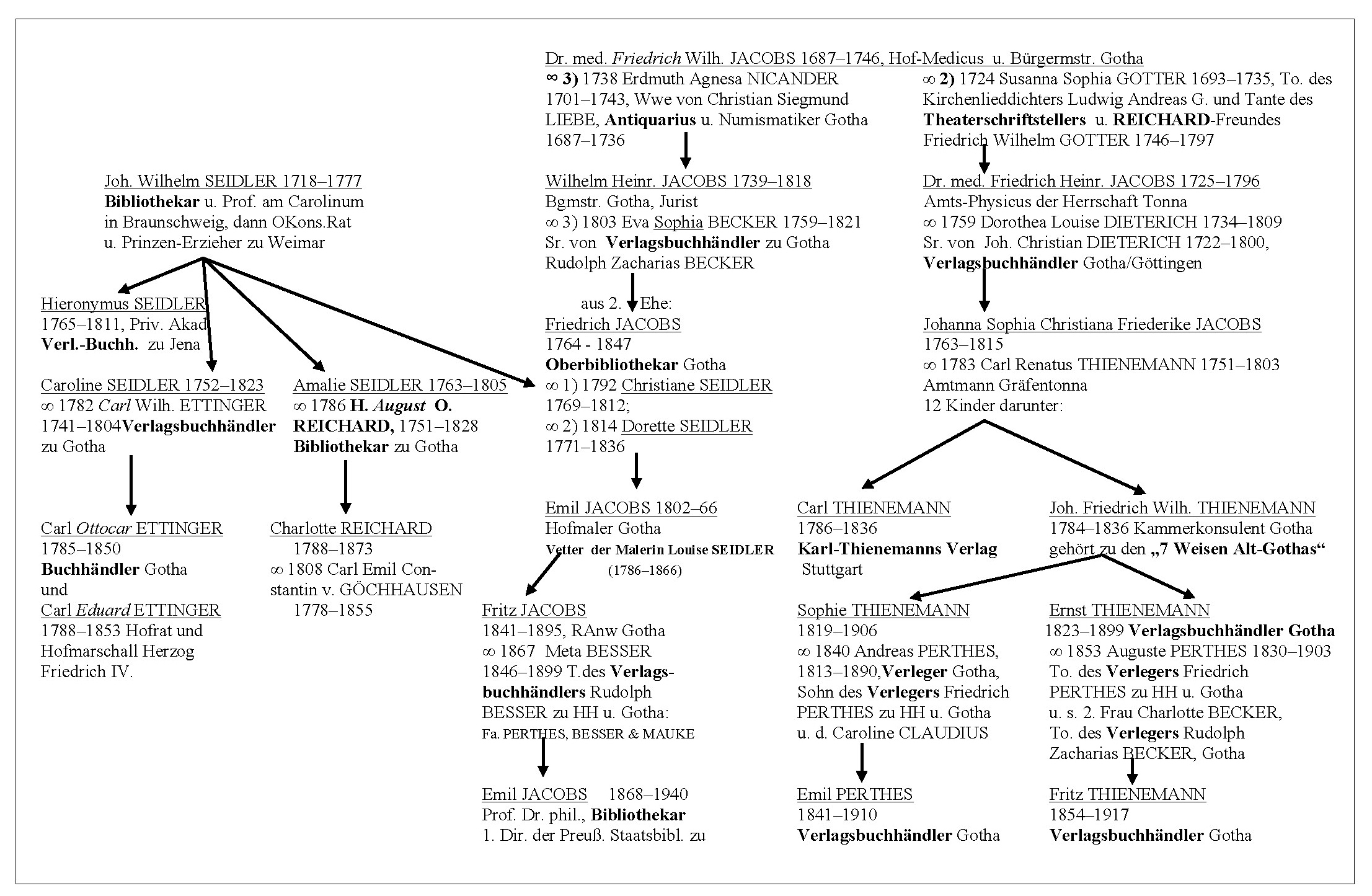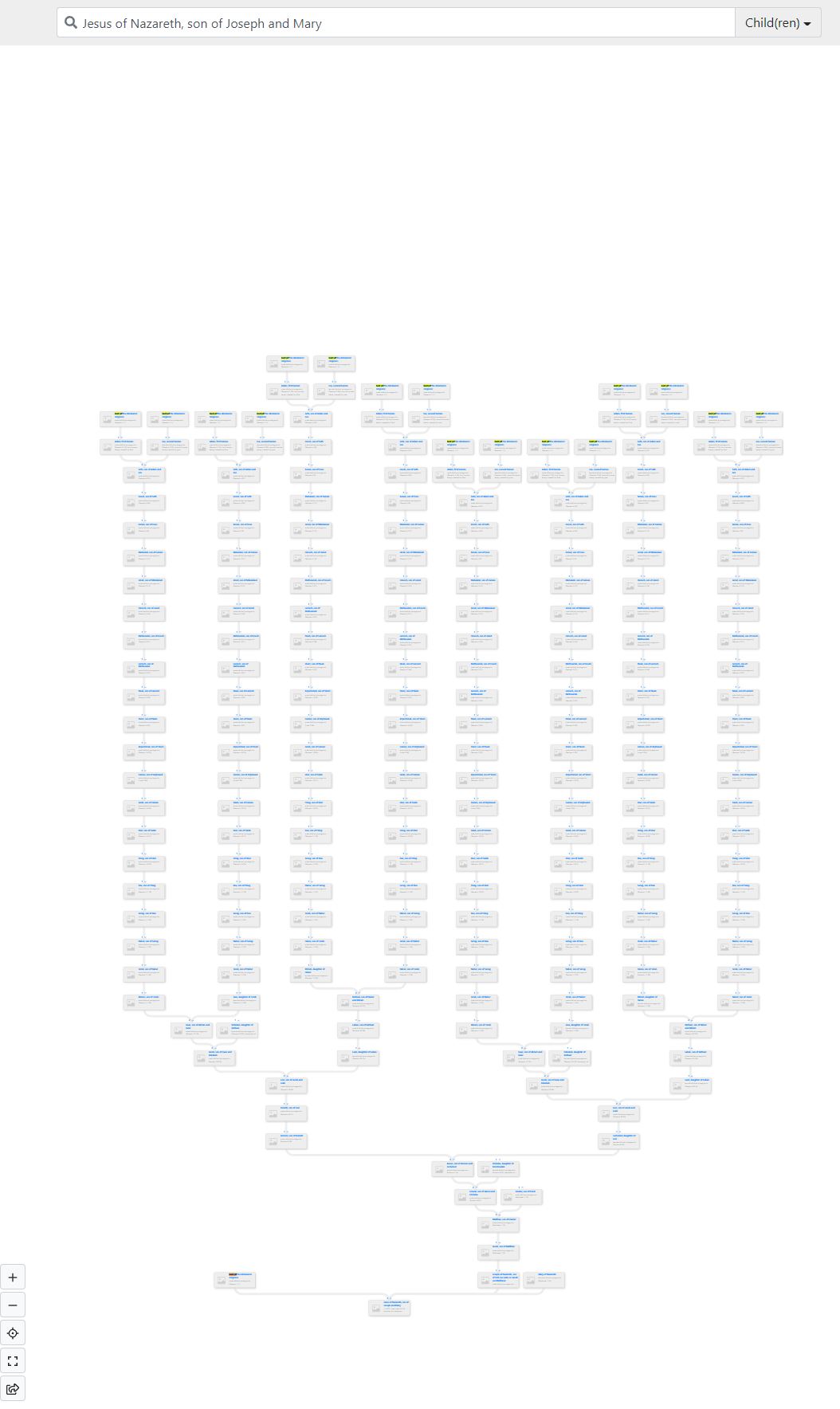User talk:Martin Schibel: Difference between revisions
Olaf Simons (talk | contribs) |
Olaf Simons (talk | contribs) |
||
| Line 35: | Line 35: | ||
The software should be able to detect identical Qs and any individual entity should exist only once on a display. | The software should be able to detect identical Qs and any individual entity should exist only once on a display. | ||
== Stemmata == | == Everything else and Stemmata == | ||
A superb feature is that one can use the application on all other statements as well. This is not always useful (as in the case of "married to" statements - they create a weird data representation as we have here reciprocal statements as in the case of [https://www.entitree.com/factgrid/en/Married_to/Q167562 Joseph of Nazareth, son of Heli (so Luke) or Jacob (so Matthew)] | |||
Revision as of 18:44, 6 October 2021
How to use Entity tree
The search field allows the input of Q-numbers and of Item Labels. If their are several Qs under the same label you will get the full selection with the descriptions to pick the right one.
The display's language can be changed at settings. The search can be defined through the pull down menu at the end of the input box - you will get here a selection of all the properties available on the item, which is quite cool as it offers you the opportunity to look at all kinds of genealogies, or, to be more precise, to look at all kinds of relations in a genealogical display.
Regular Family trees into both directions
The optimal search comes with the personal name and the "child(ren)" selection. You start with a display like this one for Friedrich Wilhelm Jacobs (Q97935) and you use the ˄ and ˅ signs to expand into the past or towards the present until there are no further options given. This will be the final result in our case (as of Oct 6 2021): this pedigree The links are uniform, you can create the standard start with any link like https://www.entitree.com/factgrid/en/Child(ren)/Q97935 - the link ends with the Q-nummber.
The program allows you to grab the entire image which you have created for your purpose with the link (use tinyurl if you need a shorter link).
Adding dimensions (for the wish list)
The case of Friedrich Wilhelm Jacobs (Q97935) is interesting as we can compare it with a hand made construct that was designed to show a particular network - here of two families in the publishing business.
The option to show all children is nice in the two standard visualisation of pedigrees - into the past, where each generation will ideally double the last with both parents added to the entire last line, but it does not allow to create particular networks, e.g. with a look at spouses and their relatives.
- One would love to be able to add wifes/husbands wherever one feels like it and one would love to be able to expand into the past and future on every person (where the information is available). Right now your presentation is deleted if you want to add options in the pull down menue. --Olaf Simons (talk) 17:50, 6 October 2021 (CEST)
- A cool feature could be a special query: you have two people and you want to know how they are related to each other. --Olaf Simons (talk) 17:52, 6 October 2021 (CEST)
Identity recognition (wish list)
Jesus of Nazareth, son of Joseph and Mary (Q1477) is known for his two competing lines of fathers stated with different successive statements in Matthew 1:16 ff and Luke 3:23 ff. Both lines diverge but also share protagonists every now and then. Here the complete picture:
This is
- the picture extended from Jesus down to God (or rather down to the 17 Gods of the Abrahamitic religions)
- just the beginning of the same picture from God downwards, where Adam and Eve are immediately creating two different lines as the software dies not accept any inbreeding.
The software should be able to detect identical Qs and any individual entity should exist only once on a display.
Everything else and Stemmata
A superb feature is that one can use the application on all other statements as well. This is not always useful (as in the case of "married to" statements - they create a weird data representation as we have here reciprocal statements as in the case of Joseph of Nazareth, son of Heli (so Luke) or Jacob (so Matthew)

